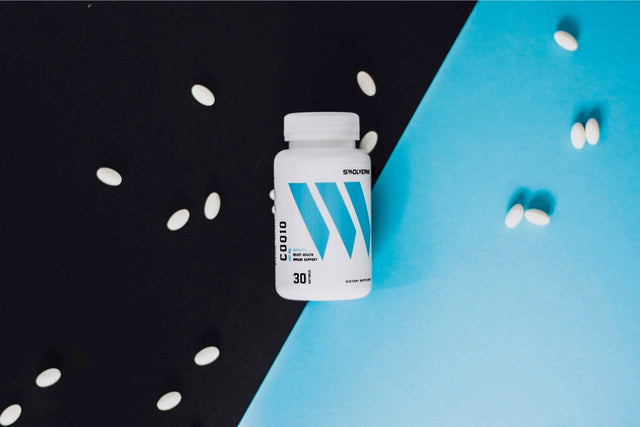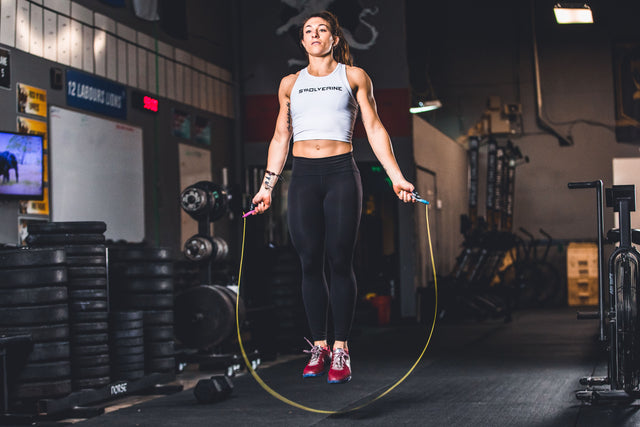How To Improve Your Rowing Technique in 5 Simple Steps
Rowing is a love-hate relationship. But the one thing that separates those who dominate rowing in their WODs from those who dread jumping on the erg is technique.
If you enjoy rowing, it's probably because at some point a coach took the time to critique and improve your movement on the rower. When rowing feels good, it doesn’t wreck your body—you feel powerful, fluid, and efficient. But if you hate rowing? Chances are your form sucks, and you don’t even know why.
Let’s break down how to improve your rowing technique in 5 simple, effective steps that will help you move smoother, stronger, and faster on the erg.
Step 1: Push Through Your Heels
Just like a squat, rowing starts from the legs. Keeping your heels down ensures you’re activating your glutes, hamstrings, and quads efficiently.
-
Form Tip: Keep your entire foot planted throughout the drive. As you push away from the flywheel, engage your posterior chain, not your toes or upper body.
-
Why it matters: According to a study published in Journal of Sports Sciences, leg drive accounts for 60% of the rowing stroke’s power output (Lamb, 1989).
This is your launchpad. Think of it like the bottom of a thruster—you wouldn’t start by pulling with your arms, right?
Step 2: Push, Don’t Pull
When you’re in the catch position—arms straight, shins vertical, torso leaned forward—it’s tempting to just yank the handle back.
Wrong move.
-
Correct technique: Drive with your legs first, open your hips, and then finish with your arms.
-
Fact check: Your legs provide ~60% of the force, hips 30%, and arms only 10% (Mahsa et al., Procedia Engineering, 2011).
So the next time someone yells “PULL HARDER,” think push instead. Let your arms be the finisher, not the driver.
Step 3: Use Your Hips
Your hips are the bridge between your lower and upper body during the rowing stroke.
-
Technique tip: Aggressively open your hips after the leg drive, creating a smooth transition of power from your lower body to your upper body.
-
Why it's important: Engaging the hips efficiently helps prevent fatigue in the back and shoulders while increasing stroke power.
This hip hinge action should feel fluid and natural, similar to the way your hips fire open in a kettlebell swing.
Step 4: Keep Your Back Straight
Lower back pain while rowing? You're probably rounding your spine.
-
Avoid this mistake: Don’t create a “C-curve” at the catch. Maintain a neutral spine throughout the stroke.
-
Position breakdown:
-
Catch: Upright torso, braced core, straight back.
-
Drive: Slight swing backward with a strong spine.
-
Finish: Lean back slightly while staying tall.
-
Recovery: Rotate from the hips, not the spine.
-
Poor rowing posture is a major injury risk. Research from Clinical Biomechanics supports that maintaining lumbar stability and proper pelvic positioning helps reduce injury incidence in repetitive rowing (Buckeridge et al., 2013).
Step 5: Pace Yourself
You wouldn’t sprint the first 400 meters of a 5K run, so don’t sprint the first strokes on the rower.
-
Monitor your splits: Use the erg monitor to track pace (e.g., 2:05/500m).
-
Establish consistency: Every stroke should be smooth and timed like the one before it.
-
Training benefit: Learning your pace gives you better insight into when to push, when to coast, and how to conserve energy in WODs.
Once you dial in your split and stroke rate, rowing becomes a strategic weapon—not just a suffer-fest.

Bonus Tips To Improve Rowing Performance
✅ Use A Full Range of Motion
Avoid short-stroking. Make sure you're extending fully and recovering completely.
✅ Incorporate Rowing Drills
Try the legs-only, arms-only, and pause drills to develop each phase of your stroke.
✅ Prioritize Mobility
Tight ankles, hips, or hamstrings? Mobility limitations can wreck your positioning. Spend time improving joint mobility to enhance your stroke mechanics.
✅ Warm-Up Properly
Do 5-10 minutes of rowing drills, dynamic hamstring stretches, and spinal activation work before hitting the rower for real.
The Takeaway: How To Get Better At Rowing
Here’s the good news—rowing doesn’t have to suck.
“I remember when I started CrossFit, I despised rowing. My back always hurt, I was painfully slow, and I felt like I was muscling every stroke,” recalls Coach Alix from Swolverine. “But once I had a coach walk me through the fundamentals, I started moving more fluidly, felt more confident, and actually began to enjoy it.”
If you're frustrated with your row, revisit these five steps. Improve your technique, and rowing can become not only more effective—but something you actually look forward to in your workouts.
Want more coaching tips? Check out Swolverine Training or The Swole Kitchen for advanced programming, mobility routines, and performance-driven nutrition support.







